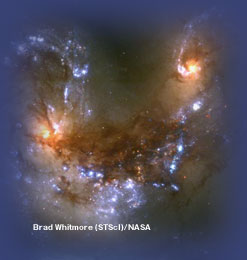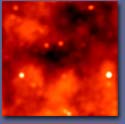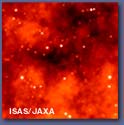 |




Akari (ASTRO-F) is designed to update space maps using an infrared telescope. It has been more than twenty years since the only previous space mapping, by the Infrared Astronomical Satellite (IRAS). Launched in 1983 by the United States, the Netherlands and the United Kingdom, IRAS provided historic data for the study of the birth and evolution of the universe, galaxies, and stars. Today, astronomers around the world are eager for new, higher-resolution data, to explore further the mysteries of the universe. Akari's sensitivity and resolution are much higher than those of IRAS. The new satellite will be able to produce 1/1,000 scale maps - a great improvement over the 1/10,000 scale maps available today.
 |
|


|
 |
 |

Akari is capable of achieving resolution about ten times as high as IRAS. Its sensitivity is also several times greater. |
 |
 |

 |
 |

 |
 |
 |
IRAS(1983) |
 |
Akari (simulated image)
 |
 |
|


There are a number of tools available for astronomical observation. We have telescopes that observe visible light (known as optical telescopes), radio waves, X-rays and infrared rays. Optical telescopes are the most common, but they cannot see interstellar dust and gas. A radio telescope, on the other hand, is a great instrument for observing gas, but not stars. And while X-rays are useful to observe extreme environments such as supernova explosions and black holes, they too have their limitations: much of the universe is actually very cold.
To get a broad picture of the universe, an infrared telescope has advantages over all three: it can see both stars and dust together, and it allows us to study low-heat environments. This means that we can produce new, more accurate space maps by studying wider regions of space.
One of the things you can see in the infrared spectrum is the formation of stars. When an enormous amount of star formation is happening in a galaxy, the stars are difficult to see with visible light, as they are blocked by dark clouds, but they are very bright, and easy to observe, in the infrared. In fact, certain galaxies emit infrared rays almost exclusively. When a star is forming, the dust in the dark cloud emits greater infrared radiation, which can be spotted easily. When a galaxy is formed, and a great number of stars are being born at the same time, this is also extremely bright in the infrared.
|
|
|

 |
|
 |







